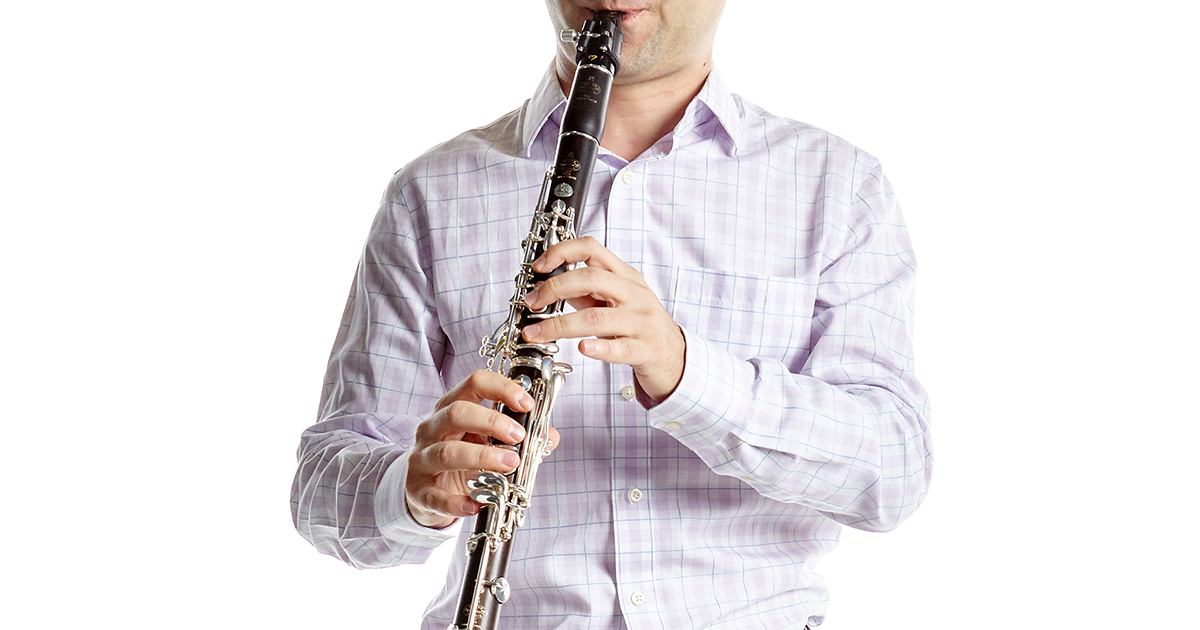A Listener's Guide to the Copland Clarinet Concerto
by Mitchell Estrin
Date Posted: May 03, 2018

Aaron Copland (1900-1990) completed his magnificent Concerto for Clarinet, Strings, Harp and Piano in 1948. Clarinetists owe a great debt of gratitude to clarinetist Benny Goodman for commissioning this work, as well as a number of other significant solo clarinet works from leading composers of the twentieth century. This list includes Béla Bartók, Morton Gould, Paul Hindemith, and Darius Milhaud.
A few years ago, one of my graduate students embarked on a research project about the history of the American clarinet concerto. He concluded that the Copland concerto was the first American clarinet concerto to become standard repertoire and that if there were any other significant works written prior to 1950, they have fallen into obscurity.
Copland presented Goodman with a working sketch of the concerto in 1948. Goodman reviewed the manuscript and made a number of editing suggestions, including the simplification of several passages and moving a few passages to a lower tessitura. This first version of the concerto is housed in the Library of Congress in Washington, D.C. and can be viewed here.
Clarinet virtuoso Charles Neidich has made a recording of the concerto based on material from these original sketches.
After meeting with Goodman’s approval, the final version of the concerto was published by Boosey & Hawkes in 1950. Fortunately for posterity, Goodman recorded the concerto with Copland conducting. This historic recording with the Columbia Symphony is well worth a listen. Not only is it beautifully performed, but we can learn from the interpretation which certainly has to be considered authentic.
With Benny Goodman, the undisputed “King of Swing” performing the solo part under the direction of the composer, we can hear the appropriate stylistic approach for interpreting the concerto. In particular, Goodman’s rhythmic style in the cadenza and second movement puts to rest any notions about the need for adding too many extra “jazzy” inflections to the rhythm or phrasing. Goodman’s approach is very classical and his performance is sublime.
There is also a later live video recording from the 1960s with Goodman performing with the Los Angeles Philharmonic, also under the direction the composer.
I have noted few anomalies in Goodman’s performances and have wondered about these for years. It is likely we will never know what the absolute answers are, as neither Goodman nor Copland is still living.
Here are three of my observations:
- In measure 371, Goodman does not follow the printed upper octave leap on beat four.
- In measures 413 and 415 Goodman plays a C natural on the last note, in conflict with the key signature. Some players have followed suit, assuming Goodman and/or Copland would have corrected such a mistake.
- In measures 430-432 the articulation in the original printed edition differs from the manuscript on the fourth beat of each measure.
The manuscript of the final version can be found in The Juilliard Manuscript Collection and can be viewed here.
Some excellent recordings of the concerto have been made by Stanley Drucker, Gary Gray, Martin Fröst, Sharon Kam, Richard Stoltzman, Eddie Daniels and many others. Each artist brings a unique personal style to the piece and all of these recordings are well worth a listen.
Subscribe to the We Are Vandoren E-newsletter (WAVE) to receive 4 weekly articles for Performers, Students, and Educators